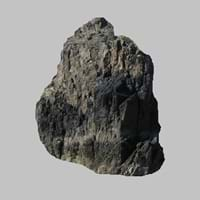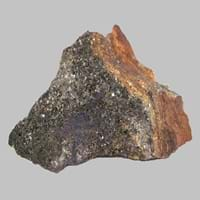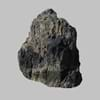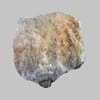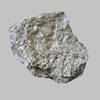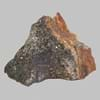Cataclasite and Hornfels
Definition
Definition
Cataclasite is a type of cataclastic rock that is formed by fracturing and comminution during faulting. It is normally cohesive and non-foliated, consisting of angular clasts in a finer-grained matrix
Hornfels is a metamorphic rock formed by the contact between mudstone or other clay rich rock, and a hot igneous body, and represents a heat altered equivalent of the original rock
History
Origin
Swiss Alps, Europe
New Zealand
Discoverer
Michael Tellinger
Unknown
Etymology
From the Italian word cataclasi
From German which means hornstone
Class
Metamorphic Rocks
Metamorphic Rocks
Sub-Class
Durable Rock, Medium Hardness Rock
Durable Rock, Soft Rock
Family
Group
Not Applicable
Not Applicable
Other Categories
Fine Grained Rock, Opaque Rock
Fine Grained Rock, Opaque Rock
Texture
Texture
Clastic
Granular, Platy
Color
Brown, Green, White, Yellow
Brown, Dark Greenish - Grey, Green, Reddish Brown
Maintenance
Less
Less
Durability
Durable
Durable
Water Resistant
Yes
Yes
Scratch Resistant
No
No
Stain Resistant
No
No
Wind Resistant
No
No
Acid Resistant
No
No
Appearance
Dull and Banded
Dull
Uses
Architecture
Interior Uses
Decorative Aggregates, Homes
Decorative Aggregates, Flooring, Homes, Interior Decoration
Exterior Uses
As Building Stone, As Facing Stone, Paving Stone
As Building Stone, As Facing Stone, Garden Decoration, Office Buildings, Paving Stone
Other Architectural Uses
Curbing
Curbing
Industry
Construction Industry
As Dimension Stone, Building houses or walls, Cement Manufacture, Construction Aggregate, for Road Aggregate
for Road Aggregate, Roadstone
Medical Industry
Not Yet Used
Not Yet Used
Antiquity Uses
Artifacts
Artifacts, Monuments
Other Uses
Commercial Uses
Commemorative Tablets, Creating Artwork
Cemetery Markers, Commemorative Tablets, Creating Artwork
Types
Types
Protocataclasite, Mesocataclasite, Ultracataclasite and Foliated cataclasite
Biotite hornfels
Features
Easily splits into thin plates, Is one of the oldest rock
Smooth to touch
Archaeological Significance
Monuments
Not Yet Used
Used
Famous Monuments
Not Applicable
Data Not Available
Sculpture
Not Yet Used
Not Yet Used
Famous Sculptures
Not Applicable
Not Applicable
Pictographs
Used
Used
Petroglyphs
Used
Used
Figurines
Not Yet Used
Not Yet Used
Fossils
Absent
Absent
Formation
Formation
Cataclasiste rocks mainly form by pressure deep under the Earth's surface, from the extreme heat caused by magma or by the intense collisions and friction of tectonic plates.
Due to change in environmental conditions, rocks are heated and pressurized deep inside the Earth's surface. Hornfels is formed from the extreme heat caused by magma or by the intense collisions and friction of tectonic plates.
Composition
Mineral Content
Albite, Apatite, Augite, Biotite, Calcite, Enstatite, Epidote, Feldspar, Micas, Muscovite or Illite, Pyroxene, Quartz
Andalusite
Compound Content
Silicon Dioxide
Fe, Mg
Transformation
Metamorphism
No
No
Types of Metamorphism
Not Applicable
Not Applicable
Weathering
Yes
Yes
Types of Weathering
Mechanical Weathering
Biological Weathering
Erosion
Yes
Yes
Types of Erosion
Coastal Erosion, Wind Erosion
Chemical Erosion, Glacier Erosion, Sea Erosion, Water Erosion, Wind Erosion
Properties
Physical Properties
Hardness
3-4
2-3
Grain Size
Fine Grained
Fine Grained
Fracture
NA
Conchoidal
Streak
Black
Unknown
Porosity
Less Porous
Highly Porous
Luster
Vitreous
Shiny
Compressive Strength
Not Available
5.80 N/mm2
31
Cleavage
Not Available
Perfect
Toughness
Not Available
Not Yet Found
Specific Gravity
2.1
3.4-3.9
Transparency
Translucent to Opaque
Opaque
Density
2.9-3.1 g/cm3
0.25-0.30 g/cm3
Thermal Properties
Specific Heat Capacity
Not Available
0.84 kJ/Kg K
15
Resistance
Heat Resistant, Impact Resistant, Pressure Resistant
Heat Resistant, Impact Resistant, Pressure Resistant
Reserves
Deposits in Eastern Continents
Asia
China, India, Russia, Saudi Arabia, South Korea
Bangladesh, Bhutan, China, India, North Korea, Qatar, Russia, Saudi Arabia, South Korea, Thailand
Africa
Egypt, Ethiopia, Kenya, Madagascar, Morocco, South Africa
Cameroon, East Africa, Tanzania, Western Africa
Europe
England, Finland, France, Spain, United Kingdom
United Kingdom
Others
Not Yet Found
Not Yet Found
Deposits in Western Continents
North America
Canada, USA
Canada, USA
South America
Argentina, Colombia
Bolivia, Brazil, Colombia, Ecuador
Deposits in Oceania Continent
Australia
Central Australia, Western Australia
New South Wales, New Zealand, Queensland, Western Australia
All about Cataclasite and Hornfels Properties
Know all about Cataclasite and Hornfels properties here. All properties of rocks are important as they define the type of rock and its application. Cataclasite and Hornfels belong to Metamorphic Rocks.Texture of Cataclasite is Clastic whereas that of Hornfels is Granular, Platy. Cataclasite appears Dull and Banded and Hornfels appears Dull. The luster of Cataclasite is vitreous while that of Hornfels is shiny. Cataclasite is available in brown, green, white, yellow colors whereas Hornfels is available in brown, dark greenish - grey, green, reddish brown colors. The commercial uses of Cataclasite are commemorative tablets, creating artwork and that of Hornfels are cemetery markers, commemorative tablets, creating artwork.
|
||
|
||
|
